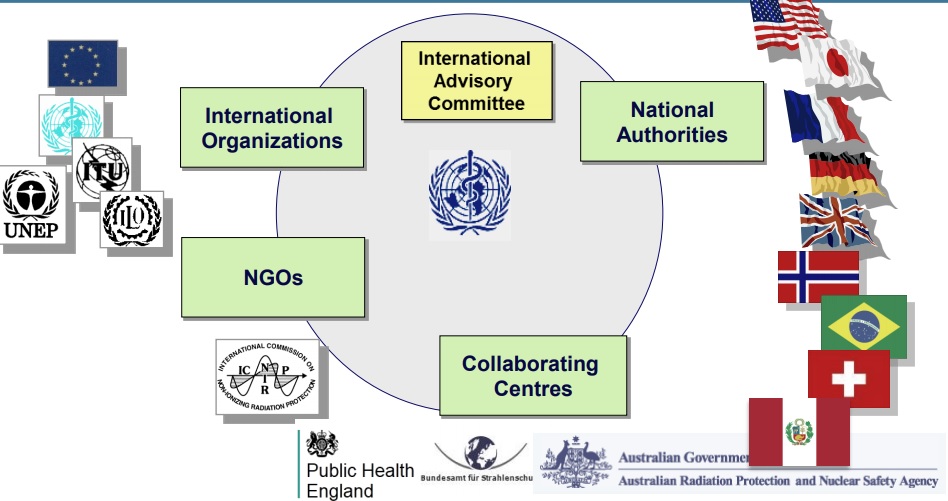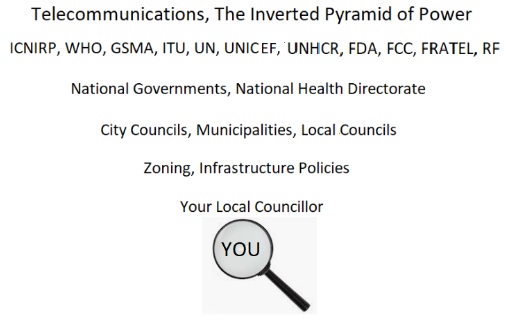In 2008, the Rockefeller Foundation brought together a group of people at their seminal conference “eHealth connect” and coined the term “mHealth”. It was short-hand to describe the use of a mobile phone to perform healthcare. The term “mHealth” gave weight to a new industry that the world could never have imagined. https://www.openmhealth.org/mhealth-2020/
The global mHealth apps market size was USD 11.17 billion in 2018 and is projected to reach USD 57.57 billion by 2026. https://www.fortunebusinessinsights.com/mhealth-apps-market-102020
eHealth Inc. Announces First Quarter 2020 Results: Revenue for the first quarter of 2020 was $106.4 million, a 55% increase compared to $68.8 million for the first quarter of 2019. https://www.prnewswire.com/news-releases/ehealth-inc-announces-first-quarter-2020-results-301046421.html

The WHO’s global strategy on digital health
• 58% of member states have an eHealth strategy.
• 87% of countries report having one or more national mHealth initiatives.
https://www.who.int/ehealth/en/
2014: Keynote speech by Dr Emilie van Deventer in Beijing China at the 4th ITU Green Standards Week “RF and Health: A WHO Perspective”
mHealth an ITU/WHO initiative https://www.itu.int/en/ITU-T/Workshops-and-Seminars/gsw/201406/Documents/Presentations/Forum-on-EMF-25-09-2014/Pres01-EmilieVanDeventer-EMF-GSW2014-KeynoteSpeech-new.pdf



In her presentation in 2014 Emilie van Deventer felt the need to highlight (and thereby attempt to diminish) the 2011 IARC RFR classification. This is evident from her slide, which is clipped for illustration purposes.

Note by EMFSA – Coffee is not on the list anymore.
In 2012 the WHO and the ITU launched a mHealth initiative, agreed to at the ITU Telecom World 2012:

2013: Telecommunication companies heavily invested in the use of mobile phones for eHealth purposes https://www.healthcareglobal.com/top-10/top-10-telecom-giants-mhealth-market
Collaboration between the WHO and the GSMA
The GSM Association is an industry organisation that represents the interests of mobile network operators worldwide. More than 750 mobile operators are full GSMA members and a further 400 companies in the broader mobile ecosystem are associate members.
2015: A Document by the WHO and the UN – A practical guide for engaging with mobile operators in mHealth for reproductive, maternal, newborn and child health – the product of a collaboration between WHO and the Groupe Speciale Mobile Association (GSMA), aims to help mHealth implementers scale up their initiatives for greater impact. https://apps.who.int/iris/bitstream/handle/10665/170275/9789241508766_eng.pdf;jsessionid=3F57F8BC85646A92B2E303E3FF57C20A?sequence=1
WHO collaborating centers
The WHO has collaborating centres for eHealth, telemedicine and health informatics which are institutions around the world that help WHO to fulfil its eHealth mandate, including the Center for Health Statistics and Information (CHSI), Ministry of Health of the People’s Republic of China.
One of the NGO’s in collaboration with the WHO is the ISfTeH International Society for Collaboration in Medicine and eHealth that consults, with among others, the Network of Francophone Telecom Regulators (FRATEL).
https://www.isfteh.org/working_groups/category/francophonie
Main stakeholders in global m-Health: United Nations agencies and other international bodies. The World Health Organization, the International Telecommunication Union, UNICEF, UNESCO and UNHCR.
UNICEF works with governments to design, enhance and scale digital health deployments that support national health goals.
https://www.britannica.com/topic/World-Health-Organization
The WHO regards the telecommunications industry as an important stakeholder in m-Health
WHO: m-Powering Development Initiative Report of the Working Group on m-Health Geneva, 31 March 2014: “There is an overlap between the Telecom and Healthcare regulatory authorities, and a need for harmonisation of regulation between the two to enable the right environment for m-Health to thrive.”
“Stimulating and facilitating collaboration between Health, Telecoms and Finance Ministries both globally and nationally: In order to realise the full potential of m-Health and to stimulate scaling up of m-Health services across the globe, important barriers need to be addressed, in particular with respect to policy and regulation.”
Fast forward to 2020:
How connectivity has helped the world adapt to COVID-19 and prepare for the next crisis: https://www.weforum.org/agenda/2020/04/how-mission-critical-connectivity-has-helped-the-world-adapt-to-covid-19-and-prepare-for-the-next-crisis
Six healthcare providers have had funding applications for the FCC COVID-19 Telehealth Program approved. Congress appropriated $200 million for the FCC to support health care providers’ use of telehealth services during this national emergency.
https://www.telecompetitor.com/fcc-approves-covid-19-telehealth-fund-applications/
April 22, 2020, Carr Details FCC’s Efforts to Expand Telehealth, mHealth Networks:
In a Healthcare Strategies podcast, Federal Communications Commissioner Brendan Carr explains how the agency is helping providers launch new telehealth and mHealth programs to address COVID-19 and transition to a connected care model of the future: https://mhealthintelligence.com/news/carr-details-fccs-efforts-to-expand-telehealth-mhealth-networks
FCC Unveils More Telehealth Grants, New 5G Fund for Rural America:
The agency reveals 6 more grant awards from the COVID-19 Telehealth Program and makes a pair of announcements to boost 5G connectivity and Wi-Fi access for rural telehealth and mHealth services:
Ingestibles, Wearables and Embeddables:
Recent advances in broadband-enabled sensor technology offer the potential for the emergence of more convenient, ultimately less-costly – and less-invasive – solutions. For example, we may soon see widespread use of smart clothing (or smart “tattoo” applications) that use skin-based sensors to measure things like heart rate, respiration and blood pressure. These new types of technologies are generically called “ingestibles,” “wearables” and “embeddables.” https://www.fcc.gov/general/ingestibles-wearables-and-embeddables
China, the emerging giant with a strong central leadership fostering technology and innovation, places its bets on artificial intelligence, telemedicine, cloud-based hospitals, and WeChat.
https://medicalfuturist.com/china-digital-health/
Influential agencies involved in decision making and their stance on mobile phones, wireless exposure and health risks:
ICNIRP: The overall evaluation of all the research on RF EMF fields as emitted by mobile phones leads to the conclusion that RF EMF exposure below the thermal threshold is unlikely to be associated with adverse health effects.
To avoid health hazards from RF EMF exposure emitted by mobile phones, the temperature rise in the body must be restricted. This can be achieved by limiting the absorption of HF energy, expressed in terms of the Specific Absorption Rate (SAR).
https://www.icnirp.org/en/applications/mobile-phones/index.html
The WHO is conducting a health risk assessment from exposure to radiofrequencies, covering the entire radiofrequency range, including 5G, to be published by 2022. https://www.who.int/news-room/q-a-detail/5g-mobile-networks-and-health
On the WHO’s website, (from 2014): ” To date, no adverse health effects have been established as being caused by mobile phone use. While an increased risk of brain tumors is not established, the increasing use of mobile phones and the lack of data for mobile phone use over time periods longer than 15 years warrant further research of mobile phone use and brain cancer risk. In particular, with the recent popularity of mobile phone use among younger people, and therefore a potentially longer lifetime of exposure, WHO has promoted further research on this group. Several studies investigating potential health effects in children and adolescents are underway.” https://www.who.int/en/news-room/fact-sheets/detail/electromagnetic-fields-and-public-health-mobile-phones
The FDA: To date, there is no consistent or credible scientific evidence of health problems caused by the exposure to radio frequency energy emitted by cell phones. https://www.fda.gov/radiation-emitting-products/cell-phones/scientific-evidence-cell-phone-safety
The FDA supports digital Health: From mobile medical apps and software that support the clinical decisions doctors make every day, to artificial intelligence and machine learning, digital technology has been driving a revolution in health care. Digital health tools have the vast potential to improve our ability to accurately diagnose and treat disease and to enhance the delivery of health care for the individual. https://www.fda.gov/medical-devices/digital-health
Will the SAR (Specific Absorption Rate) have to be displayed on eHealth and mHealth products?

The French Agency ANFR has determined that from the 1st of July the SAR will have to be displayed on all equipment used close to the human body, including phones and smart watches. https://www.emfsa.co.za/news/french-agency-anfr-from-1-st-of-july-2020-sar-to-be-displayed-on-all-rfr-emitting-equipment-used-in-close-proximity-to-the-body/
eHealth and mHealth Services – the Precautionary Principle
Some eHealth and mHealth products are specifically aimed at pregnant mothers, especially in underdeveloped countries.
Would it not be advisable, at the very minimum, to include a few precautionary messages on how to use a phone in a safer way?
For instance:
• Placing distance between the phone and the body/head.
• Avoid storing the phone in the bra.
• Aim to keep the phone away from the pregnant belly (some mothers put the phones on the belly to play music for the baby).
• Advice about blue light from screens.
The FCC and the FDA both, although not endorsing the need for these practices, provides information on some simple steps that you can take to reduce your exposure to RF energy from cell phones. For example, wireless devices only emit RF energy when you are using them and, the closer the device is to you, the more energy you will absorb.
Note by EMFSA – as per the FCC’s website: “wireless devices only emit RF energy when you are using them” – not correct – even when not making a phone call the phone will “shake hands” with the tower several times an hour. This requires the phone to go to maximum power and then fall back to the mutually acceptable [phone/tower] connectivity level.
The City of Berkeley requires that you be provided the following notice:
A cell phone retailer shall provide to each customer who buys or leases a cellphone a notice containing the following language:
To assure safety, the Federal Government requires that cell phones meet radio frequency (RF) exposure guidelines. If you carry or use your phone in a pants or shirt pocket or tucked into a bra when the phone is ON and connected to a wireless network, you may exceed the federal guidelines for exposure to RF radiation. Refer to the instructions in your phone or user manual for information about how to use your phone safely. https://www.saferemr.com/2014/11/berkeley-cell-phone-right-to-know.html
We know that some phones exceed the SAR limit: https://www.emfsa.co.za/news/press-release-nokia-3-1-finally-pinned-by-anfr-and-its-sar-updated/
There is no doubt that eHealth and mHealth services have benefited and will continue to benefit mankind. In our opinion applying the Precautionary Principle as pertaining to the use of wireless devices should be considered and incorporated.
Even if research should, in years to come, indicate further problems with radiofrequency radiation, a change in cancer classification and official guidelines is highly unlikely due the enormous amount of money involved in the eHealth and mHealth market. Perhaps the regulatory authorities will continue to ignore the warning signs and prefer to gamble with the assumption that “the benefits outweigh the possible risks”.
Facing reality

